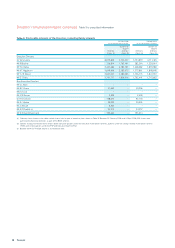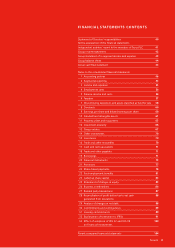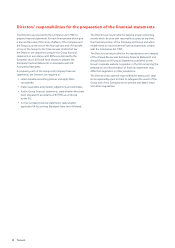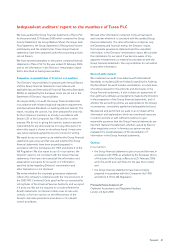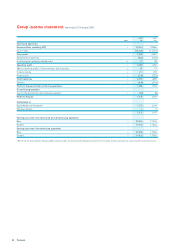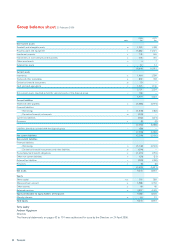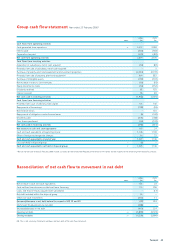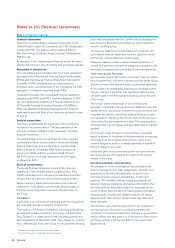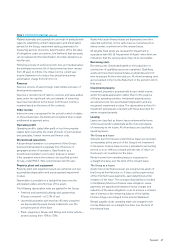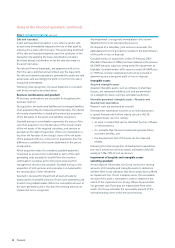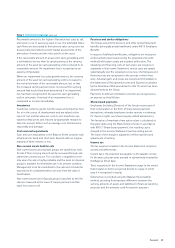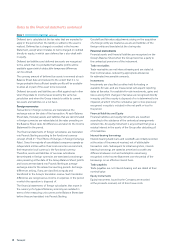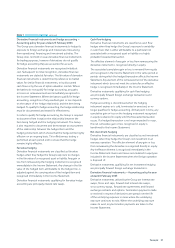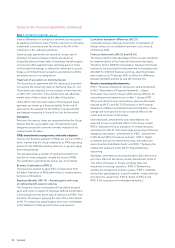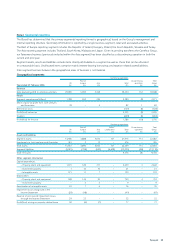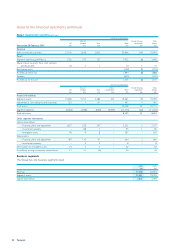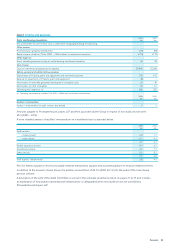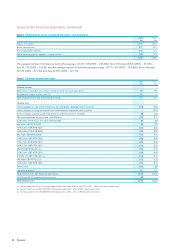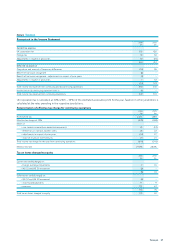Tesco 2006 Annual Report Download - page 49
Download and view the complete annual report
Please find page 49 of the 2006 Tesco annual report below. You can navigate through the pages in the report by either clicking on the pages listed below, or by using the keyword search tool below to find specific information within the annual report.
47Tesco plc
Note 1 Accounting policies continued
Material estimates and assumptions are made in particular with
regard to establishing uniform depreciation and amortisation
periods for the Group, impairment testing, parameters for
measuring pension provisions, determination of the fair value
of obligations under put options, the likelihood that tax assets
can be realised and the classification of certain operations as
held for sale.
Following a review of useful economic lives and residual values
the estimated economic life of land premia has been revised
from 40 years to infinite. The impact on the current year
Income Statement is to reduce the annual land premia
amortisation charge from £21m to nil.
Revenue
Revenue consists of sales through retail outlets and sales of
development properties.
Revenue is recorded net of returns, vouchers and value-added
taxes, when the significant risks and rewards of ownership
have been transferred to the buyer. Commission income is
recorded based on the terms of the contracts.
Other income
Interest income is recognised for the period to which it relates
on the accruals basis. Dividends arerecognised when a legal
entitlement to payment arises.
Operating profit
Operating profit is stated after profit or loss from property-
related items but before the share of results of joint ventures
and associates, finance income and finance costs.
Discontinued operations
Adiscontinued operation is a component of the Group’s
businessthat represents a separate line of business or
geographical area of operations. Classification as a
discontinued operation occurs upon disposal or earlier,
if the operation meets the criteria to be classified as held
for sale, under IFRS 5 ‘Non-current Assets held for sale’.
Property,plant and equipment
Property, plant and equipment assets are carried at cost less
accumulated depreciation and any recognised impairment
in value.
Depreciation is provided on a straight-line basis over the
anticipated useful economic lives of the assets.
The following depreciation rates are applied for the Group:
• Freehold and leasehold buildings with greater than
40 years unexpired – at 2.5% of cost
• Leasehold properties with less than 40 years unexpired
aredepreciated by equal annual instalments over the
unexpired period of the lease
• Plant, equipment, fixtures and fittings and motor vehicles –
at rates varying from 10% to 33%.
Assets held under finance leases are depreciated over their
expected useful lives on the same basis as owned assets or,
where shorter, over the term of the relevant lease.
All tangible fixed assets are reviewed for impairment in
accordance with IAS 36 ‘Impairment of Assets’ when there are
indications that the carrying value may not be recoverable.
Borrowing costs
Borrowing costs directly attributable to the acquisition or
construction of qualifying assets are capitalised. Qualifying
assets are those that necessarily take a substantial period of
time to prepare for their intended use. All other borrowing costs
are recognised in the Income Statement in the period in which
they occur.
Investment property
Investment property is property held to earn rental income
and/or for capital appreciation rather than for the purpose
of Group operating activities. Investment property assets
are carried at cost less accumulated depreciation and any
recognised impairment in value. The depreciation policies for
Investment property are consistent with those described for
owner-occupied property.
Leasing
Leases are classified as finance leases whenever the terms
of the lease transfer substantially all the risks and rewards
of ownership to the lessee. All other leases are classified as
operating leases.
The Group as a lessor
Amounts due from lessees under finance leases are recorded
as receivables at the amount of the Group’s net investment
in the leases. Finance lease income is allocated to accounting
periods soas to reflect a constant periodic rate of return on
the Group’s net investment in the lease.
Rental income from operating leases is recognised on
a straight-line basis over the term of the relevant lease.
The Group as a lessee
Assets held under finance leases are recognised as assets of
the Group at their fair value or, if lower, at the present value
of the minimum leasepayments, each determined at the
inception of the lease. The corresponding liability is included
in the BalanceSheet as a finance lease obligation. Lease
payments areapportioned between financecharges and
reduction of the lease obligations so as to achieve a constant
rateof interest on the remaining balance of the liability.
Financecharges arecharged tothe Income Statement.
Rentals payable under operating leases are charged to the
Income Statement on a straight-line basis over the term of
the relevant lease.



